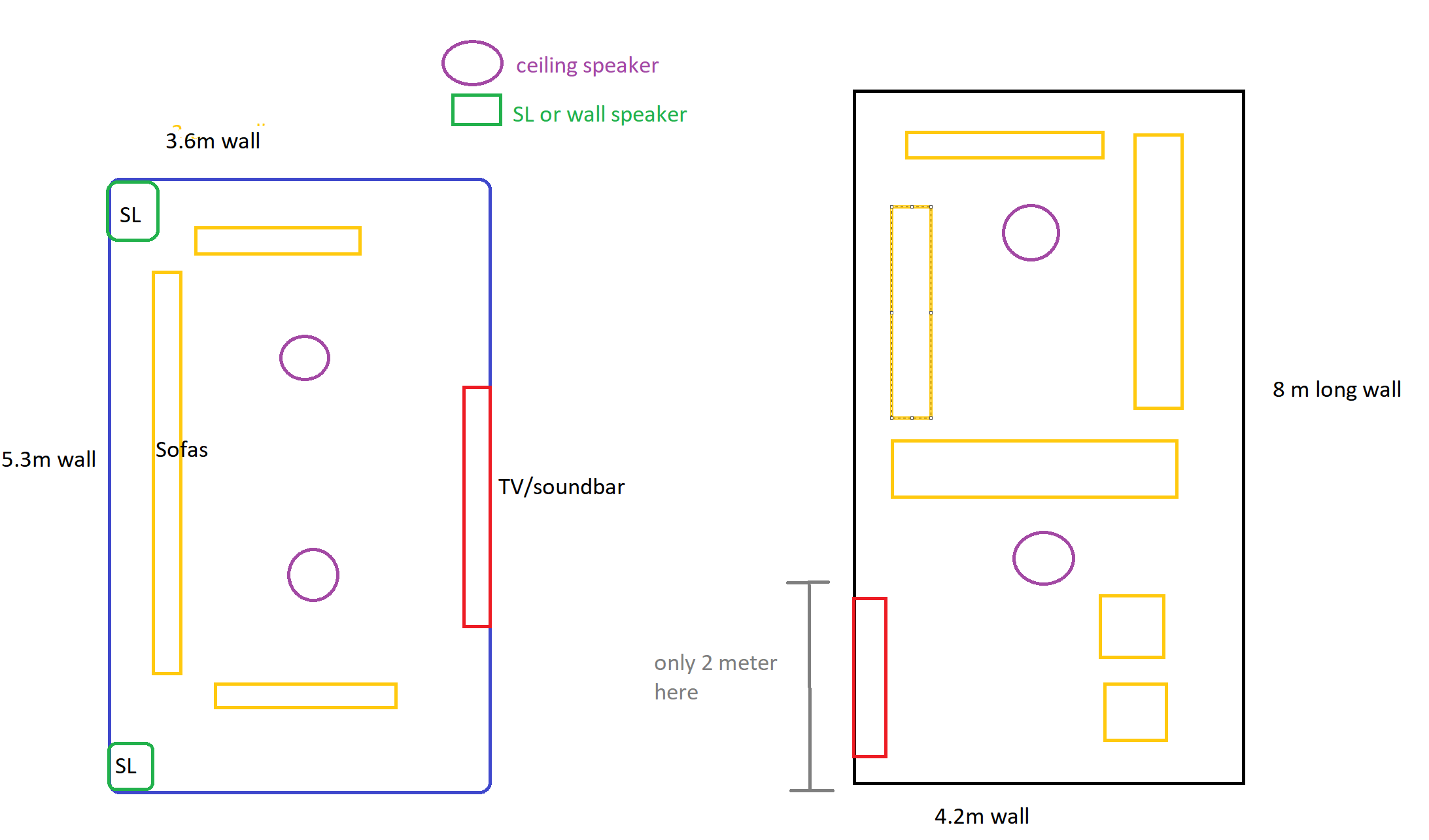Hi
Setting up two rooms and grateful for your thoughts on best set up, not sure I have the right set up (too much / too little speakers) feel free to give your thoughts, however sofa/tv placement can’t be changed.
Room 1 - A mini cinema room left side of pic (see below) with approx 55 inch TV which will be used daily
- beam 2 + amp + 2 SL speakers
- Arc + amp + 2 SL speakers
- In wall with amp
- In ceiling with amp
Room 2 - A larger formal lounge but with a smaller TV area (right side of pic) which will be used less. As TV is not centered am I right in thinking corner SL not required and 2 ceiling speakers are sufficient?
Or would it just be simpler to scrap ceiling and to just have an Arc/beam with amp?
Also is wall/ceiling is superior than a soundbar + speakers or does wall/ceiling still require SL speaker to compliment it?
Is it necessary to always have an amp with beam/arc/wall/ceiling (sorry if that’s silly question)?
Is it possible for a SL speaker to be paired into more than 1 group e.g. I temporarily add / move it to from cinema room to the kitchen or is it one group only, after which you pair/unpair to set up in a new room?
Lastly how is your experience of using wireless vs ethernet cables for such a set up?
Thank you in advance! :)

Thanks ! :)
